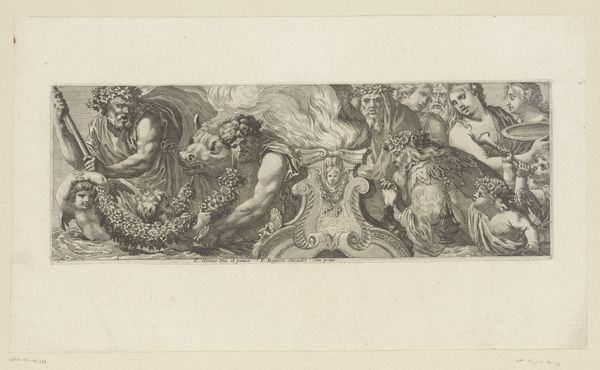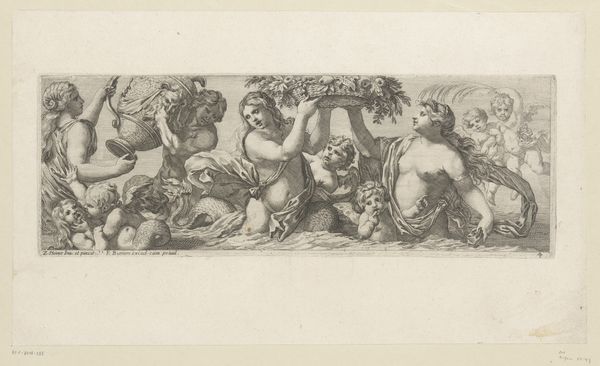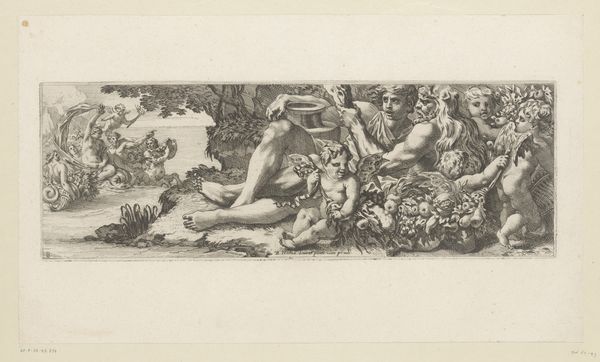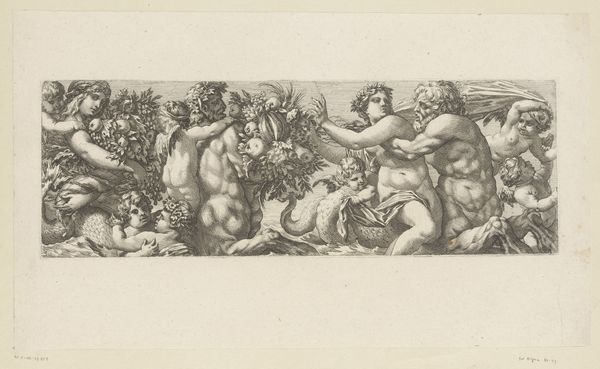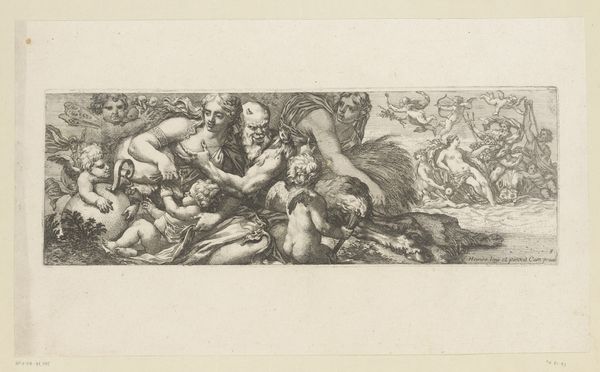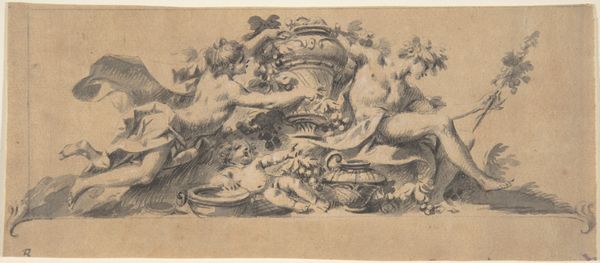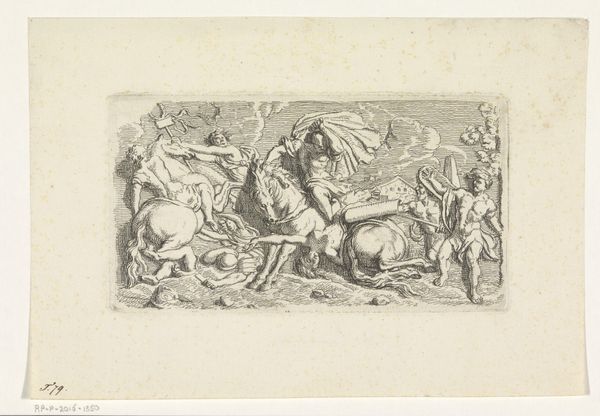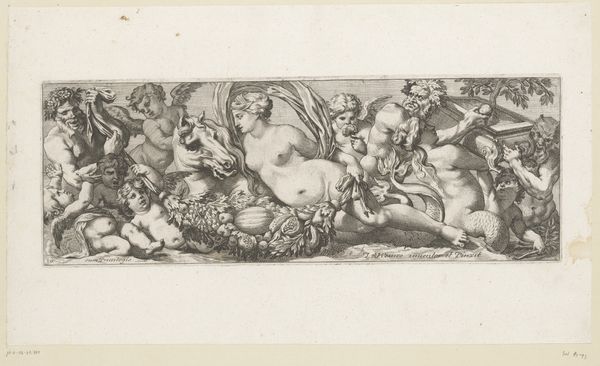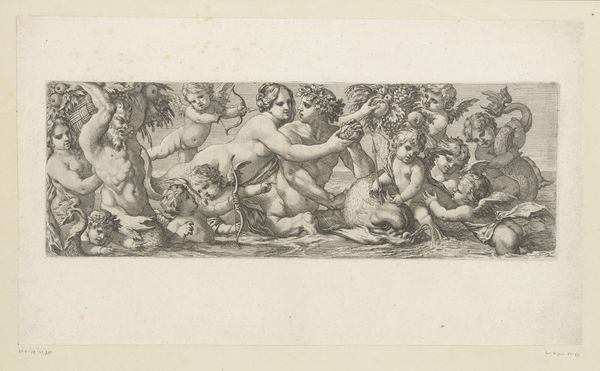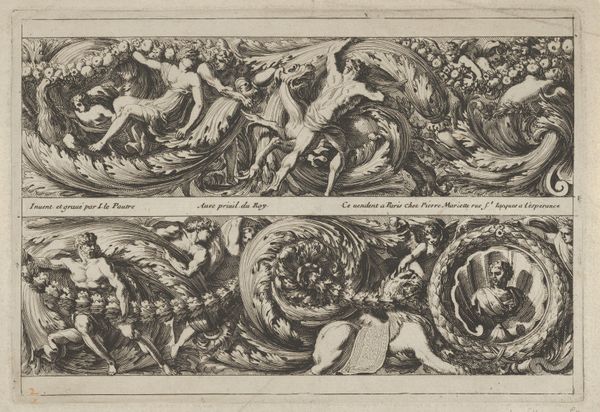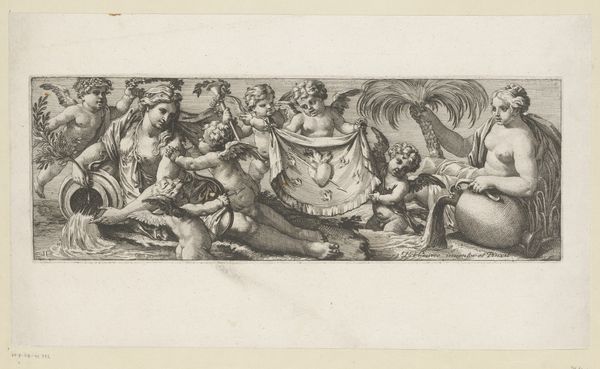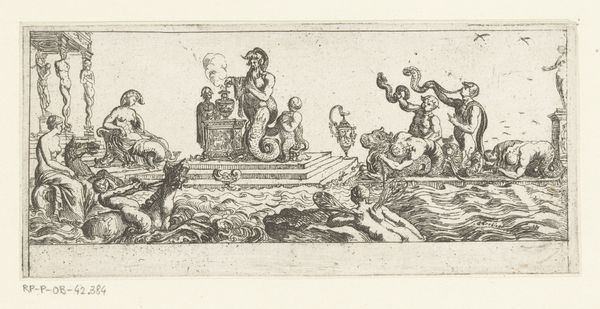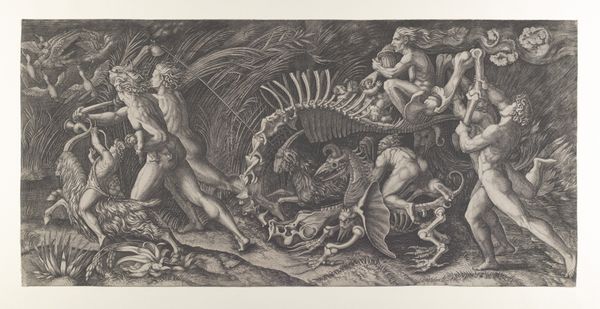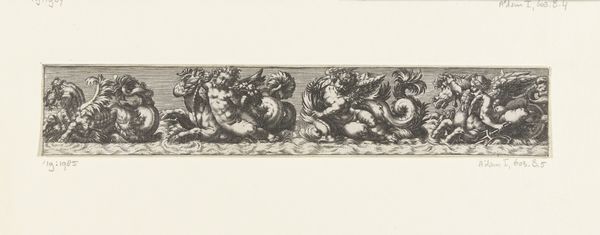
#
pencil drawn
#
photo of handprinted image
#
aged paper
#
toned paper
#
light pencil work
#
ink paper printed
#
pencil sketch
#
old engraving style
#
personal sketchbook
#
pencil work
Dimensions: height 133 mm, width 372 mm
Copyright: Rijks Museum: Open Domain
François Bignon created this engraving called “Triumph of Galatea with Nereids, Satyrs and Putti” in France in the mid-17th century. It depicts Galatea, a sea nymph from Greek mythology, surrounded by other mythological figures. Prints like this one were often made as preparatory drawings to be translated into a larger piece, such as a fresco or tapestry. So this engraving shows the kind of imagery that was considered prestigious during the time of the French Baroque, a style promoted by the royal court and widely circulated to become the aesthetic of the era. Here, Bignon is drawing on the conventions of classical mythology, full of gods and goddesses engaged in various amorous or dramatic pursuits. In the 17th century, knowledge of these classical stories would have been a mark of elite status. The ability of the wealthy to commission such images reinforced social hierarchies. To understand this work more fully, one could explore emblem books and other illustrated sources to grasp the meanings associated with the figures depicted here. Ultimately, the meaning of this print is closely tied to the social and institutional contexts in which it was created.
Comments
No comments
Be the first to comment and join the conversation on the ultimate creative platform.
